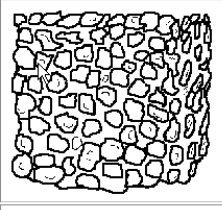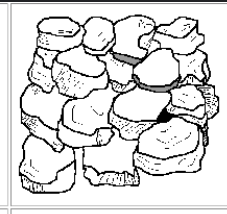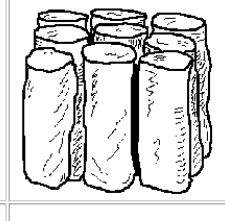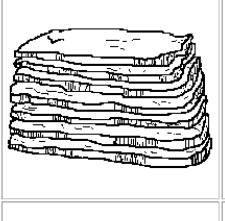Glass & Soil
1/27
Earn XP
Description and Tags
Trace Evidence class w/ Dr. Elizabeth Chesna
Name | Mastery | Learn | Test | Matching | Spaced |
|---|
No study sessions yet.
28 Terms
What three factors make glass a valuable material?
Persistent, measurable, transferable
What is glass made out of?
Silicone oxides (sand) and metal oxides
When molted glass is cooled on a bath of molten tin, ie… windows
Float glass
Stronger than normal glass due to rapid heating and cooling of the glass surfaces, ie… car windows, aquariums, phone screens
Temp glass
Has a layer of plastic between two pieces of ordinary window glass, ie… car windshields
Laminated glass
Involves feeding precise portions of the mix into a container-forming machine, blowing compressed air into a blow mold to shape the container, and applying a lubricant coating before final packaging.
Container glass
What three types of glass are most commonly encountered in forensics?
Vehicular, architectural, and container glass
What are common methods for glass recovery?
Handpicking, tweezers. scrapping, tape lifting, and shaking
What are the physical characteristics of glass under a microscope?
Color, thickness, isotropy, edge comparison features, and fracture features
What is the key optical property measured in glass examination?
Refractive Index
What is the best method to determine the refractive index of a glass fragment?
Glass immersion
What is the bright halo near the border of a particle that is undergoing glass immersion called?
The Becke line
Which method is not recommended for glass examination due to lack of sensitivity?
SEM-EDS
Put these three methods in order of sensitivity from least to greatest:
1. LA-ICP-MS
μ-XRF
LIBS
μ-XRF < LIBS < LA-ICP-MS
What is the name for soil that is larger than 2mm in size?
Stones
These soils are also known as heavy soils, and are the smallest in size (<0.002mm). They hold a high proportion of water, but may drain slowly and take longer to heat up. These soils are easily compact when wet, and may crack when dry.
Clay soils
These soils are also known as light soils, and are relatively large (0.05-2mm). These soils drain quickly after rain, and warm up quickly. They are often very acidic, and have a “gritty” element.
Sandy soils
These soils are fertile, well drained, and hold moisture well. They have a smooth and fine quality, and may be transported by moving currents. They are used in agricultural processes to improve soil fertility. They have a soapy, slippery texture and do not clump easily. (0.002-0.05mm)
Silt soils
These soils are comprised of a mixture of clay, sand, and silt. They are used in farming, and have higher calcium & pH levels due to its inorganic origins.
Loamy soils
Soils that are mainly organic matter and are usually very fertile.
Peat soils
These soils may be light or heavy. They are largely made of calcium carbonate and are very alkaline.
Chalky soil
What does the ‘class’ category describe for soil particles?
Average size
What does the ‘type’ category describe for soil particles?
Form/shape

This term describes the shape of soil as spherical grains. They have high permeability, and are found in the A horizon.
Granular

This term describes the shape of soil as square or angular blocks. They have moderate permeability, and are found in the B horizon.
Blocky

This term describes the shape of soil as vertical columns or pillars.. They have moderate permeability, and are found in the B horizon.
Prismatic

This term describes the shape of soil as thin plates or sheets, piled horizontally on one another. They have low permeability, and are found in the A horizon.
Platy
Over how many distinguishable colors are there in soil?
1,100